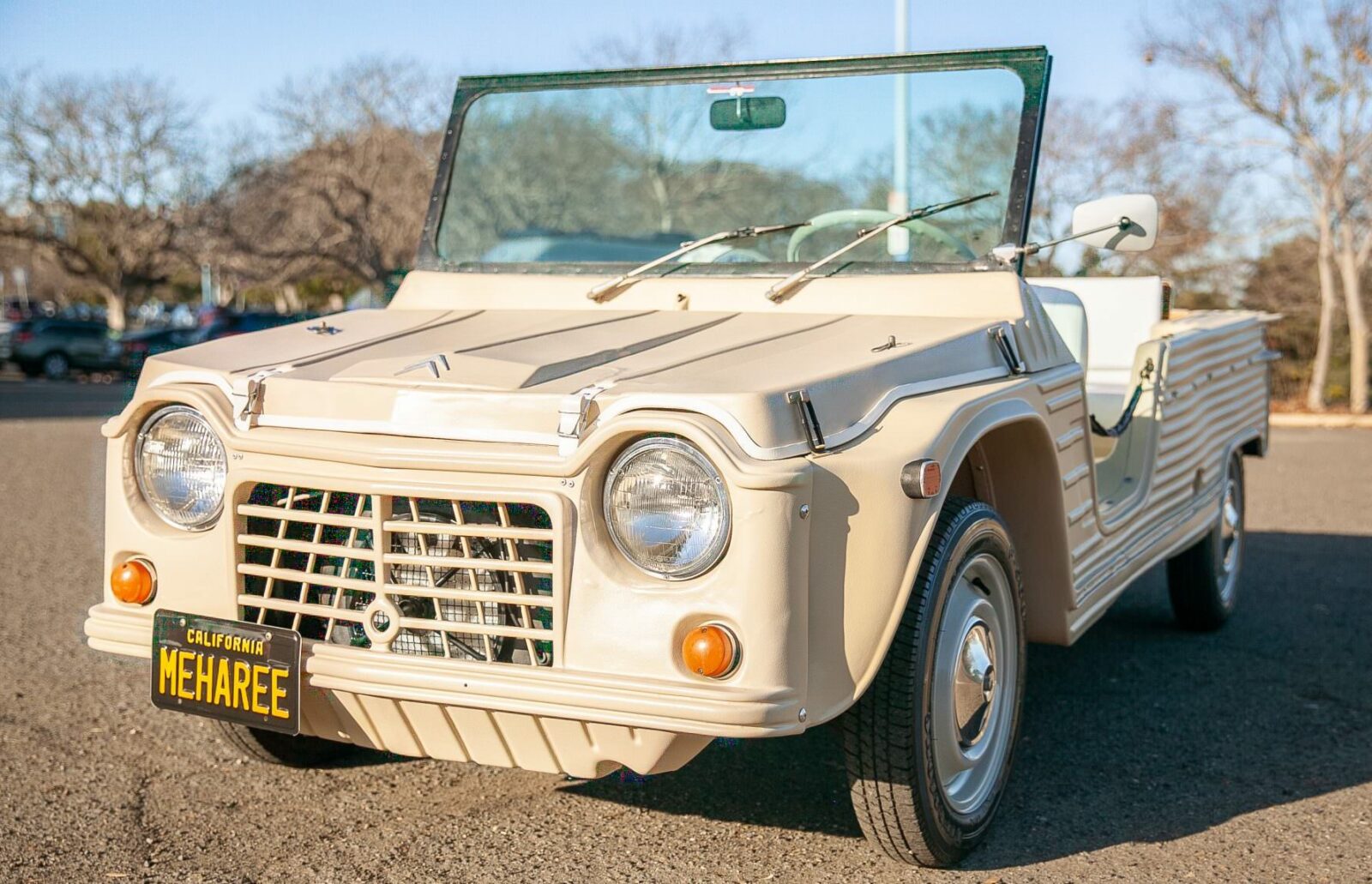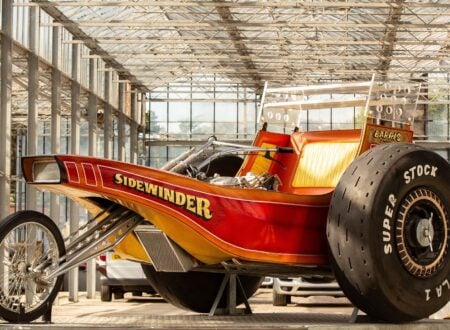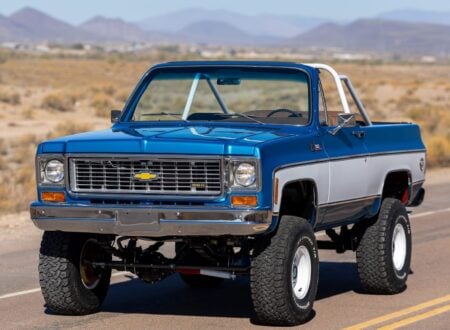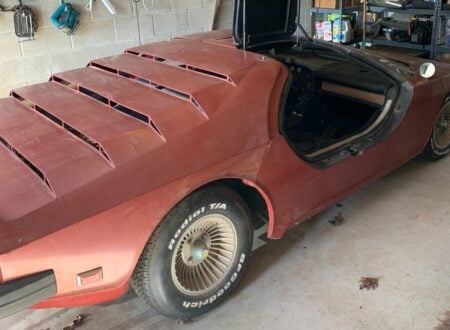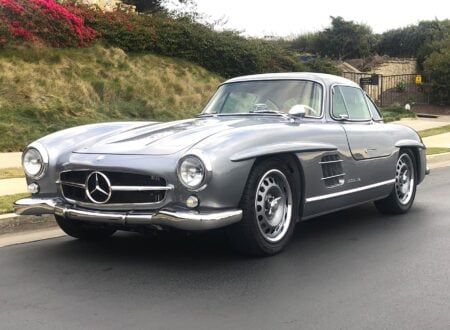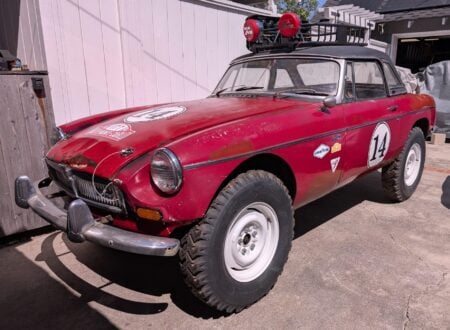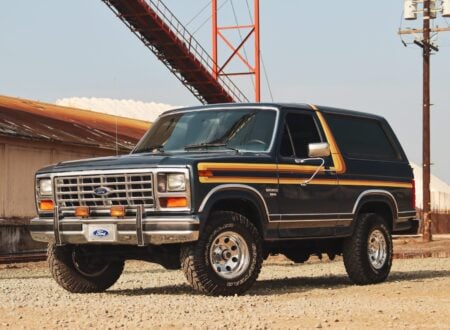The Citroën Méhari was developed in the 1960s as one of the world’s first ABS plastic-bodied cars. It was influenced by the WWII-era Willys Jeep and the Mini Moke, and it was invented by French World War II fighter ace Count Roland de la Poype.
The Méhari would remain in production for 20 years with over 140,000 of them sold, they were commonly used at beach resorts in Europe but they were also bought as a cheap form of urban transport, and the French Army bought thousands of them.
Fast Facts – The Citroën Méhari
- The Citroën Méhari was conceived by Roland de La Poype, a former French fighter pilot and entrepreneur, who aimed to develop an affordable, versatile, and lightweight vehicle inspired by the Mini Moke and World War II-era Jeep. The Méhari made its debut at the Paris Motor Show in 1968, garnering significant attention for its unique design and utility.
- The Méhari was built on the Citroën Dyane 6 chassis and the 2CV mechanicals. However, it stood out for its ABS plastic body, developed by de La Poype himself. This innovative material made the car lightweight, corrosion-proof, and low-maintenance. Its design featured a minimalist open body, removable doors, a foldable windshield, and a convertible soft-top roof, which contributed to its adaptability and off-road capabilities.
- Responding to the demand for a more capable off-road vehicle, Citroën introduced the four-wheel-drive Méhari 4×4 in 1970. This variant gained traction with the French military and other organizations that required a rugged, agile vehicle for various tasks, such as patrolling, reconnaissance, and transportation of personnel and equipment.
- The Méhari’s adaptability and ease of maintenance made it popular among civilians, particularly in beach communities and rural areas. Its association with fun and adventure led to its adoption as a leisure and utility vehicle. The Méhari became a symbol of carefree, outdoor living and was widely embraced for its quirky design and simple functionality.
- The Citroën Méhari was manufactured for two decades, with over 140,000 units produced during this period. Although it was primarily sold in Europe, the car reached various international markets, including a brief period of importation into the United States between 1969 and 1970.
The Car With A Plastic Body
The story of the Méhari begins with its creator, Count Roland de la Poype, a French World War II fighter ace, and industrialist. After the war, de la Poype turned his attention to plastics and founded the Société d’Etudes et d’Applications des Plastiques (SEAP). Inspired by the success of the Mini Moke, a lightweight utility vehicle, de la Poype sought to create a similar car with a lightweight ABS plastic body.


The goal of de la Poype was to showcase the automotive possibilities of mass-produced plastic-bodied cars. As much as he admired the Mini Moke he recognized that the vehicle’s two biggest drawbacks were the limited ground clearance, and the rust-prone steel unibody shell.
The Méhari would solve both of these issues, offering far more ground clearance, better suspension, and the now famous ABS plastic body with its corrugated sides, fold down windscreen, and beach-friendly hop-in/hop-out open layout.
The Méhari name was derived from the fast-running dromedary camel species known for its endurance and agility. The car was unveiled at the Paris Motor Show in October 1968 and quickly gained popularity for its unique design, robustness, and versatility.
The Citroën Méhari
One of the most striking aspects of the Citroën Méhari was its body, made entirely of ABS (Acrylonitrile Butadiene Styrene) plastic. This material was lightweight, it obviously can’t rust, and it provided a degree of flexibility that made the car adaptable to a wide variety of conditions.
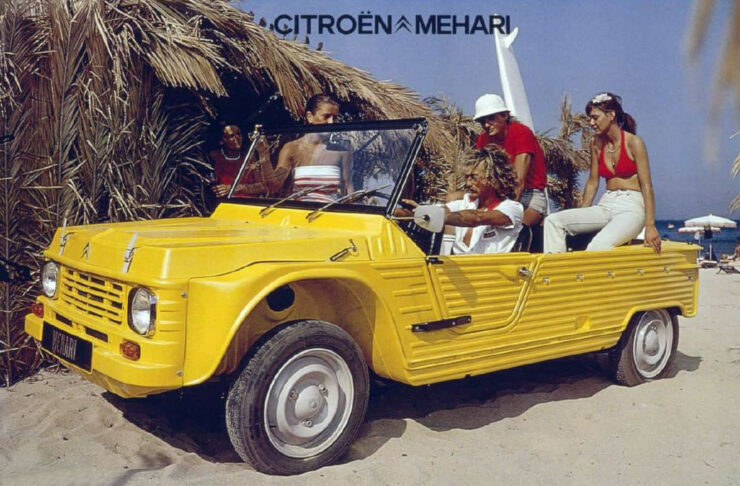

The body was dyed in a range of vibrant colors, which added to the vehicle’s distinctive appearance and appealed broadly to the fashionable French youth of the 1960s and beyond.
The Méhari was built on the chassis of the Citroën Dyane 6 and borrowed many of its mechanical components with the Citroën 2CV including the air-cooled, 602cc flat-twin engine which powered the front wheels.
Its simple yet rugged suspension system offered surprisingly good off-road capabilities, thanks in part to the lightweight body and very low center of gravity. The front-wheel-drive layout allowed for good traction, and if the car should ever get bogged it was only a matter of two or more people pushing it out.
Thanks in no small part to the lightweight body, the standard front-wheel drive Citroën Méhari weighs just 570 kgs (or 1,256 lbs) which compares favorably with the steel-bodied Willys MB Jeep at 1,113 kgs (or 2,453 lbs).
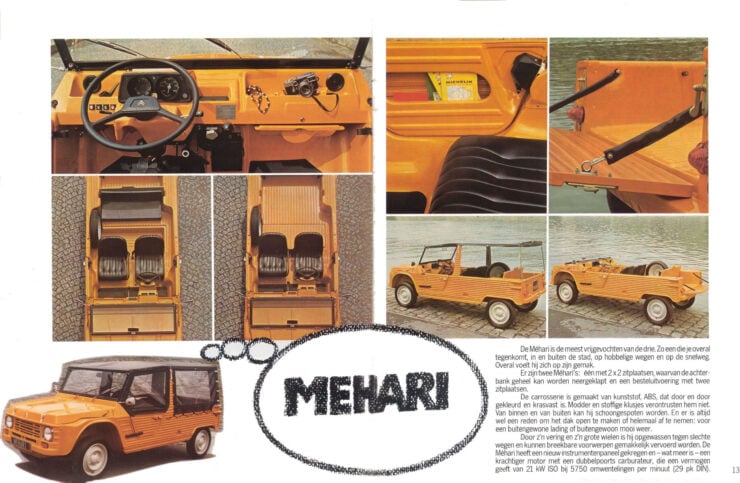

The Citroën Méhari’s design lent itself to a wide range of uses, making it a popular choice for both civilian and military applications. Its spacious, open-air cabin and fold-down windshield made it an ideal beach buggy, while its rugged construction and off-road capabilities attracted the attention of the military.
The Arrival Of The Citroën Méhari 4×4
In 1979, Citroën introduced the Méhari 4×4, featuring a four-wheel-drive system and a lockable rear differential, further enhancing the vehicle’s off-road ability. Unlike the Citroën 2CV 4×4 which used an engine at each end to power the front and back respectively, the Méhari 4×4 used a single front-mounted engine to power all four wheels.
The Méhari remained in production until 1987, with over 144,000 units produced. Despite its discontinuation, the Méhari has retained a loyal following among enthusiasts, and well-preserved examples are highly sought after in the collector’s market.
Above Video: This vintage clip from 1980 shows the Citroen Meharis that competed in the Paris-Dakar Rally. It’s in Italian, however the footage is worth seeing.
In 2016, Citroën paid homage to the iconic vehicle with the introduction of the E-Méhari, a modern electric version that embodied the spirit of the original while embracing a modern 100% electric drivetrain.
The 1970 Citroën Méhari Shown Here
The car you see here is a US-market version which has recently been through a recent refurbishing. This included having the body repaired and repainted in tan, the seats were retrimmed in white-vinyl, and the engine was rebuilt to ensure many more years of service.
It rides on period-correct 15” wheels and it has sealed beam headlights, front lap belts, rubber floor mats, and a spare tire covered in the same material as the seats.
It’s now being offered for sale out of San Diego, California with original manufacturer’s literature, workshop manuals, spare parts, a car cover, personalized black California license plates that read “Meharee,” and a clean California title in the seller’s name.
If you’d like to read more about it or register to bid you can visit the listing here on Bring a Trailer.
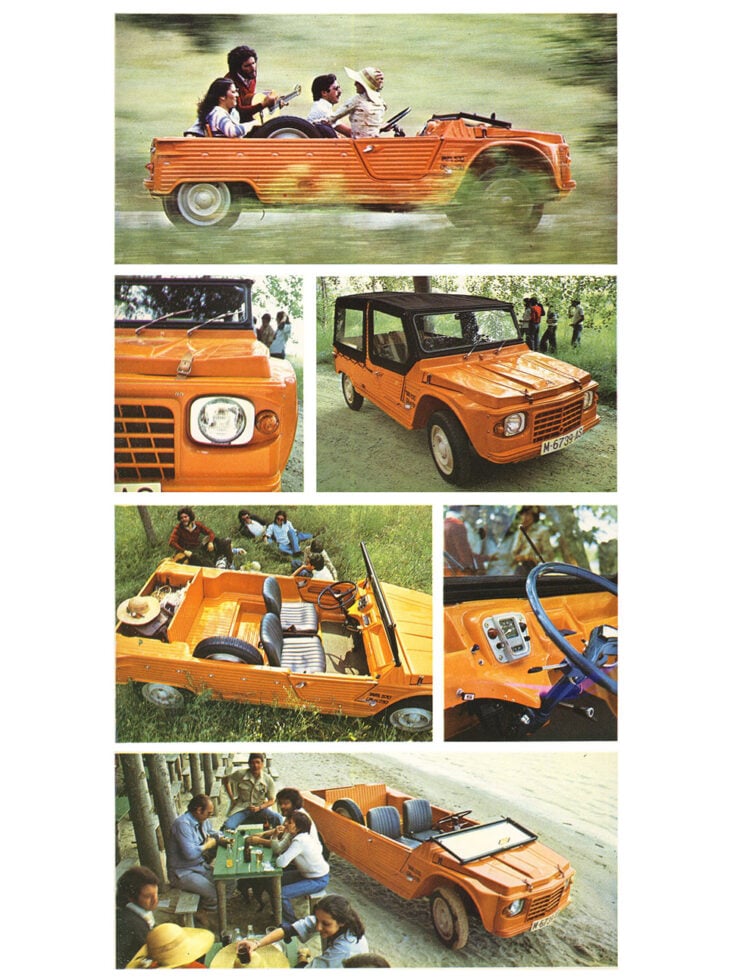
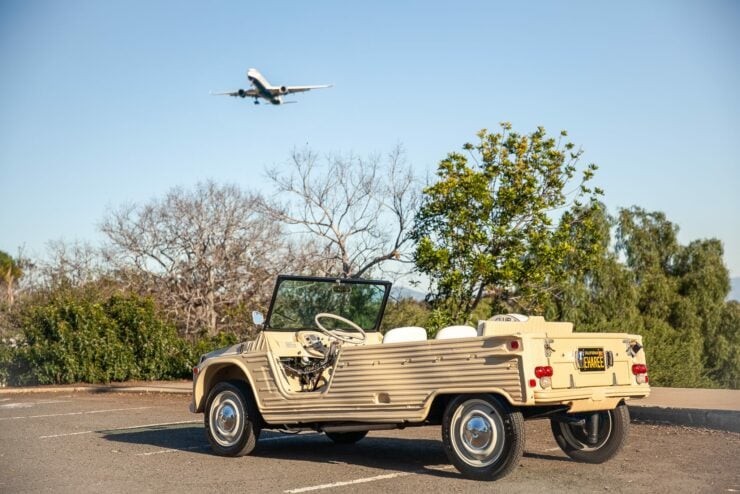
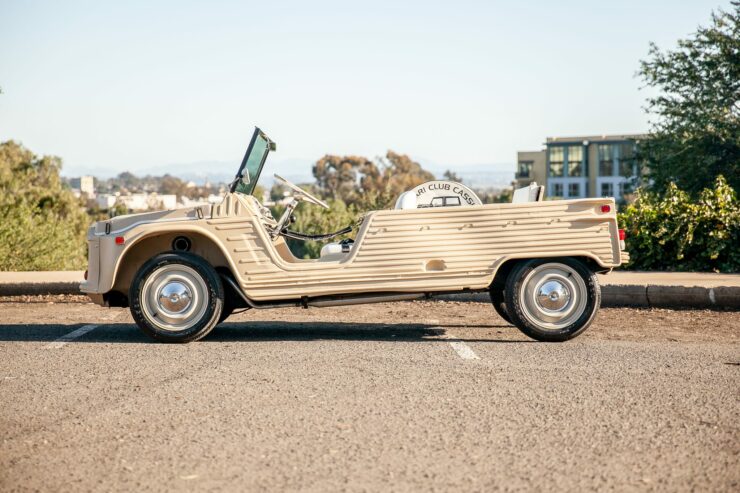
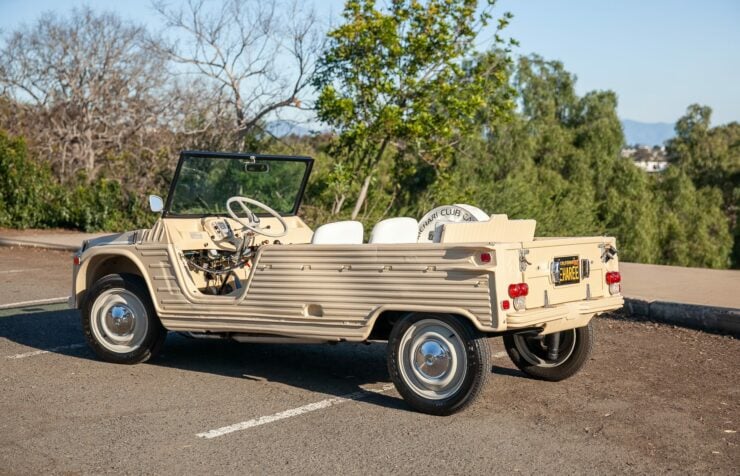
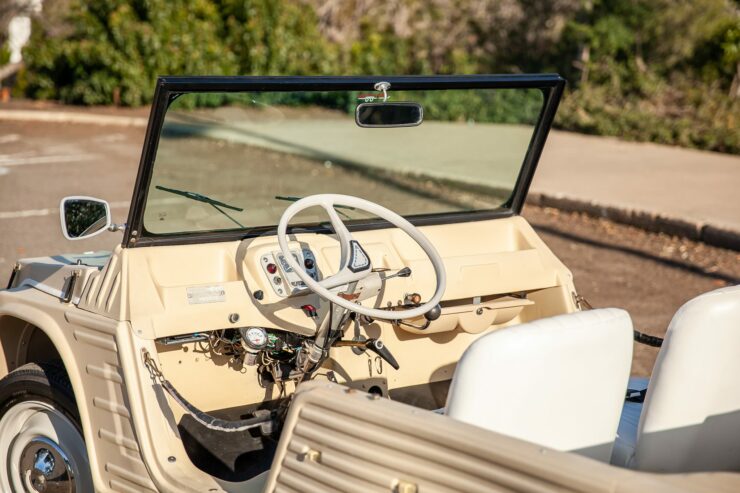
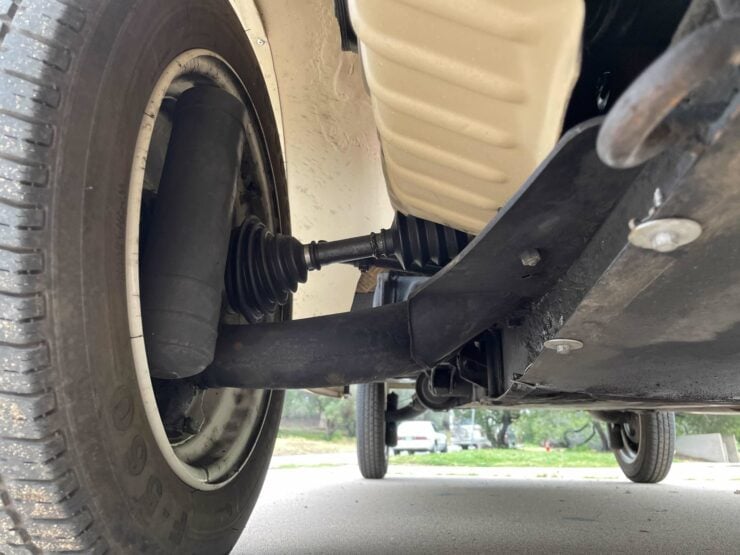
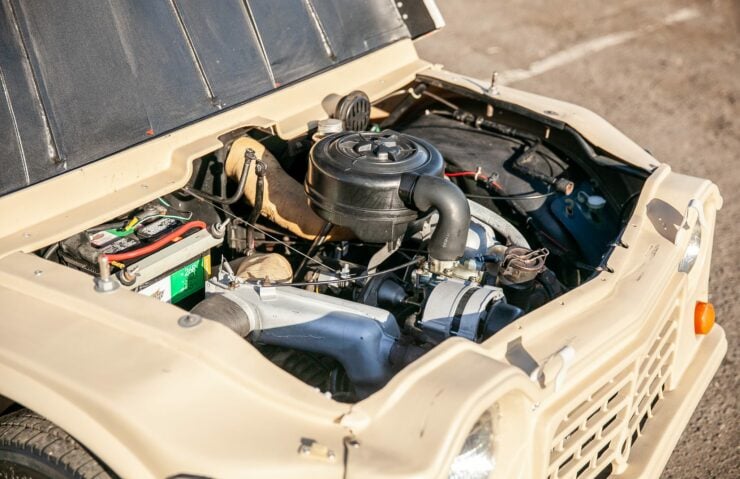
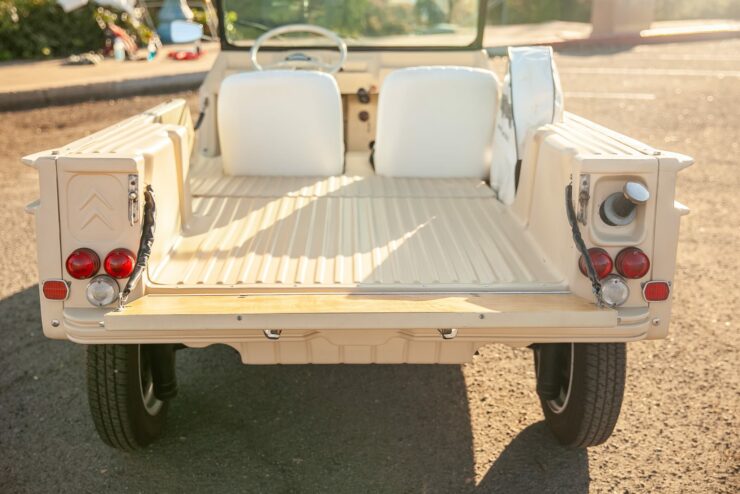
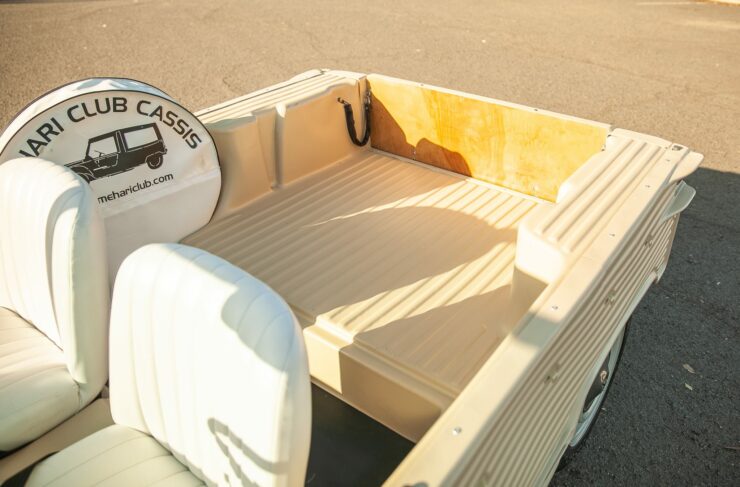
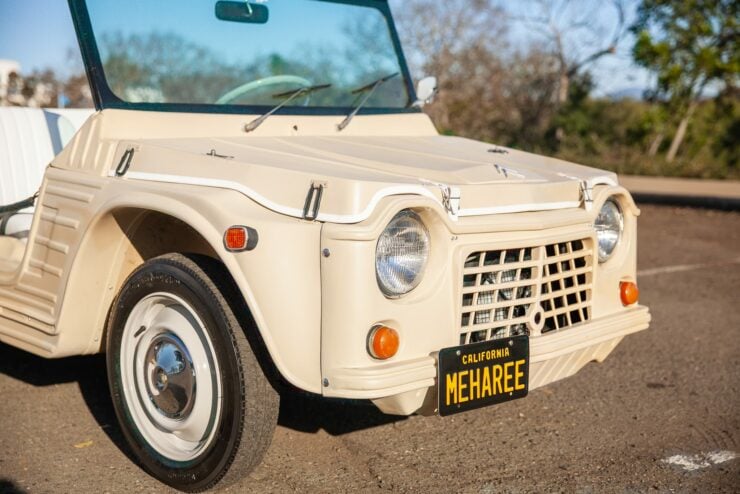
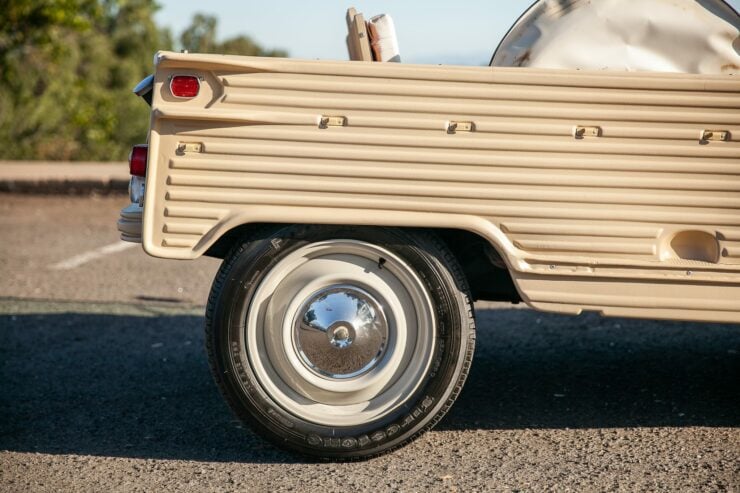
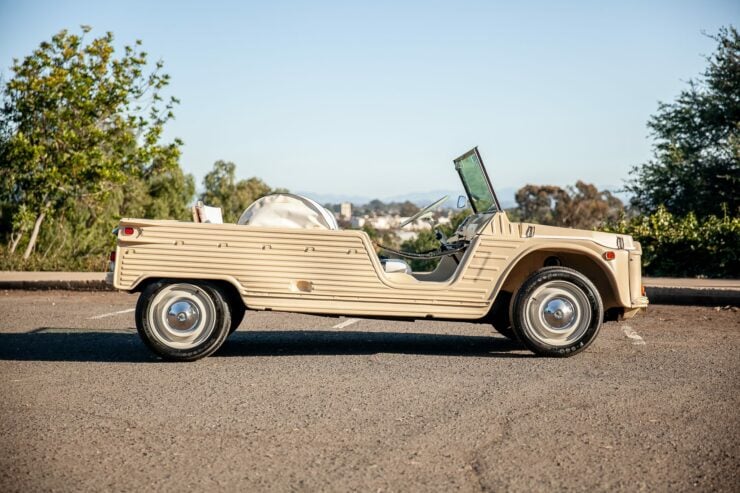
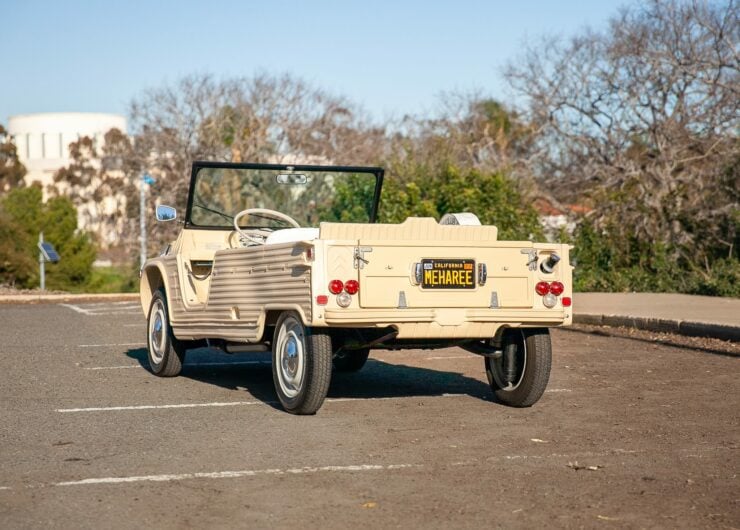
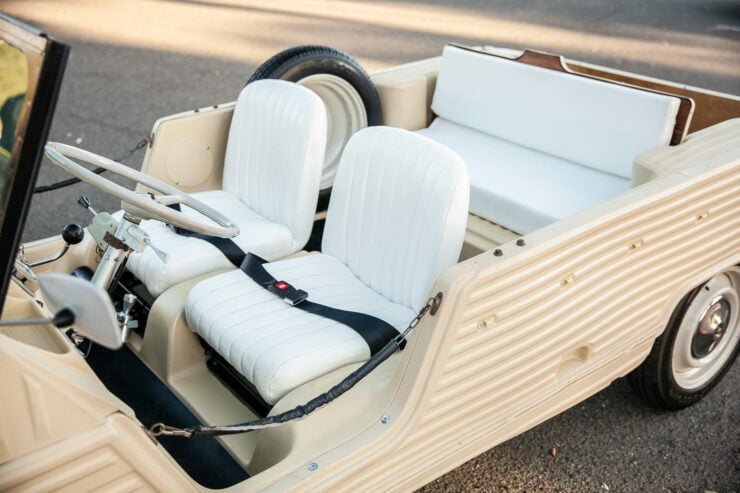
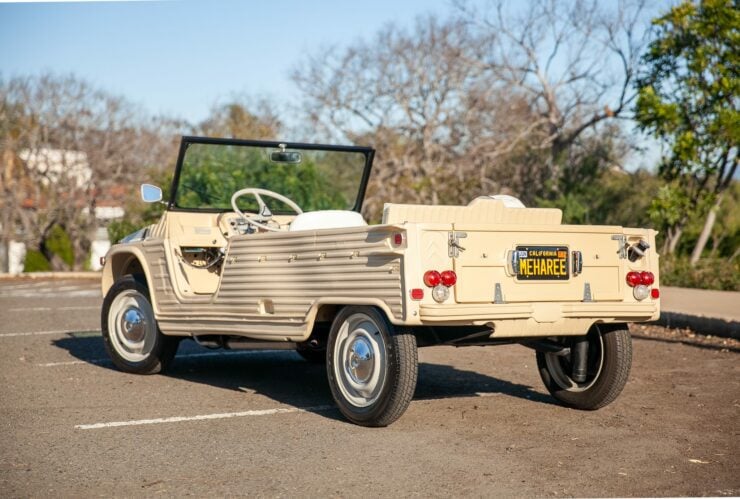
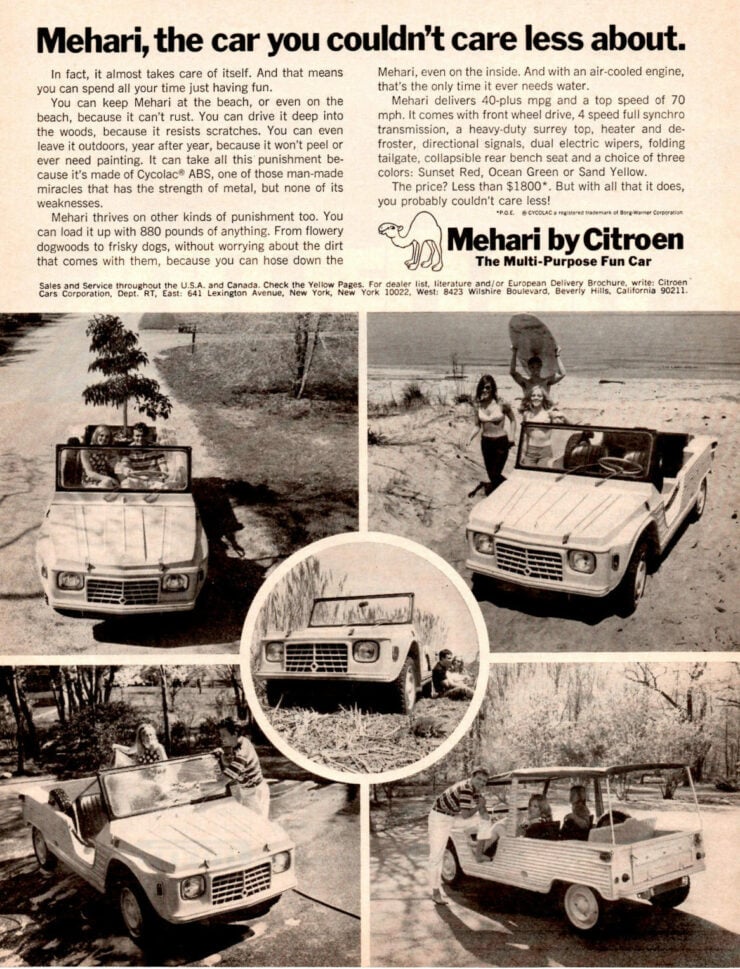
Images courtesy of Bring a Trailer

